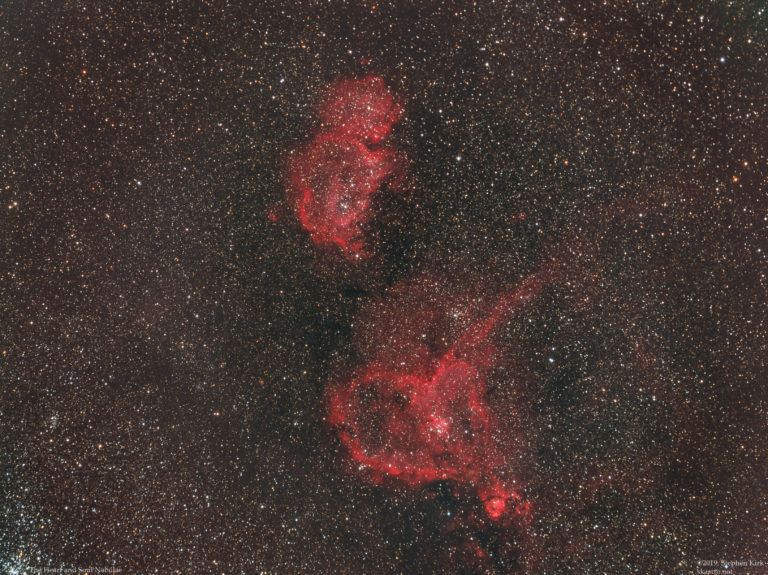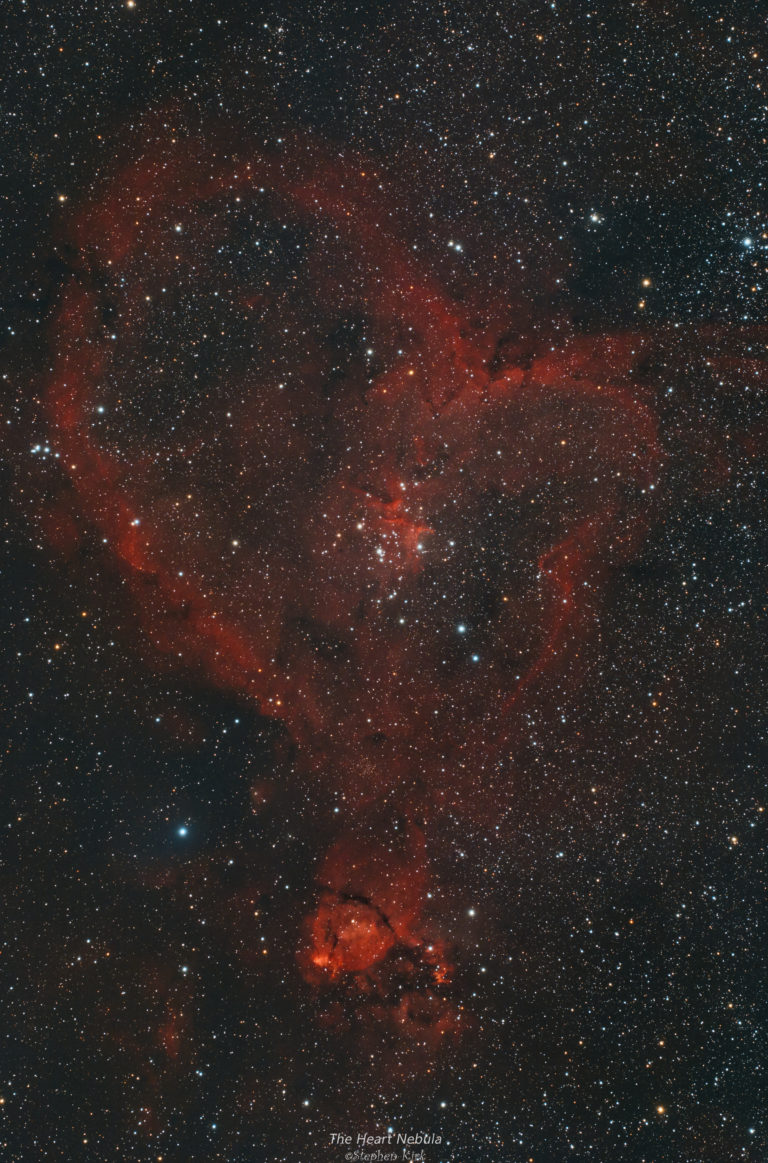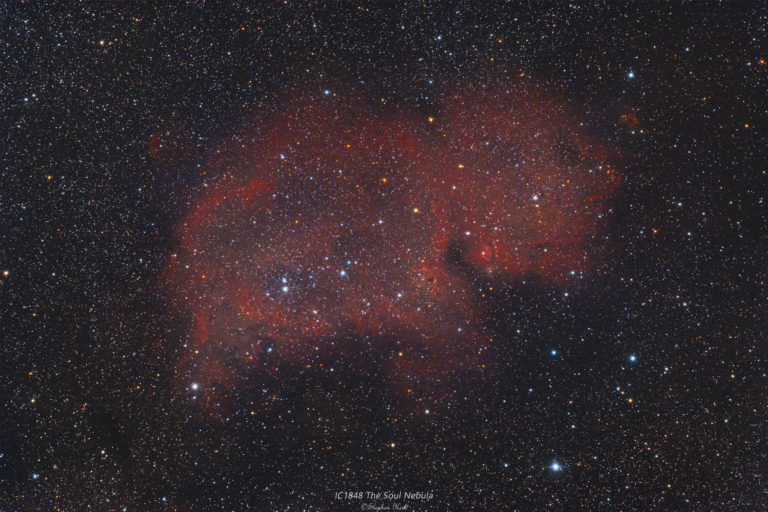The Heart and Soul Nebulae are a well known and famous pairing of Nebulae in the late summer/autumn sky of the Northern Hemisphere. These nebulae are located far away – 7500 light years – in the Perseus arm of the galaxy, further out from the core of the galaxy than the Sun and are vast star forming regions rich in Hydrogen Alpha that gives the images the intense red glow.All image data collected with a Samyang 135mm lens at F2.8 with a Moravian G2-8300 CCD camera. Below is the RGB image gathered with Astrodon RGB filters. All binned 1×1: Red 14 x 300s; Green 13 x 300s; Blue 14 x 300s. This gives an RGB integration time of 210 minutes or three and a half hours.The picture looks nice but it does lack punch and vibrancy as it stands. It needs the addition of the Hydrogen Alpha data that will…
A famous emission nebula in the Northern constellation of Cassiopeia, the Heart Nebula is a huge star forming region located about 8000 light years away, out in the Perseus Arm of our galaxy. It is often imaged as a pair of nebulae alongside the Soul Nebula as the famous Heart and Soul Nebulae. I have imaged them together here as well as The Soul nebula here, presented on its own. It is also known as IC1805 and Sharpless S2-190. The Heart Nebula It is a beautiful nebula and I have even seen it portrayed on Valentine cards 🙂 Technical Details Imaged from my back yard in Nottingham, UK on 20 December 2020. Seeing conditions and sky transparency were reasonable. I used Takahashi FSQ85 refractor at native focal length and a QHY268C OSC CMOS camera. I took 42 x 180s exposures and the data was captured with Sequence Generator Pro. Processed…
The Soul Nebula – IC1848 The Soul Nebula is a large emission nebula in the constellation of Cassiopeia. It is commonly imaged with the nearby Heart Nebula as a nebula pair, not unsurprisingly called the Heart and Soul Nebulae such as my rendition here. The Soul Nebula is a vast star forming region and is located about 7000 light years away, in the Perseus Arm of our galaxy, outward from the core. It is sometimes called the baby nebula because it resembles a baby! Technical Data Imaged with my Takahashi FSQ85 refractor at its native focal length and I used my QHY268C colour camera on MESU 200 mount using off-axis guiding. The mage comprises 42 x 3 minute exposures to give a total integration time of just over two hours. It could use some more data, especially some Ha data to bring put more detail in the nebula. Seeing and…



